THE PANAMA CANAL IS AN ENGINEERING MARVEL with a touch of political chicanery and a soupçon of colonialism thrown in for flavor. It was prohibitively expensive to build at the beginning of the Twentieth Century, both in dollars and lives lost and still costs a bundle to transit. Cruise ships generally reserve a time-slot and are charged by tonnage plus per passenger—Oosterdam’s toll was $330K! Tariff for container ships, we were told, starts at one million bucks—small wonder that it is Panama’s #1 industry. The more frugal who don’t want to pay for a reserved time can wait in line for up to three weeks.
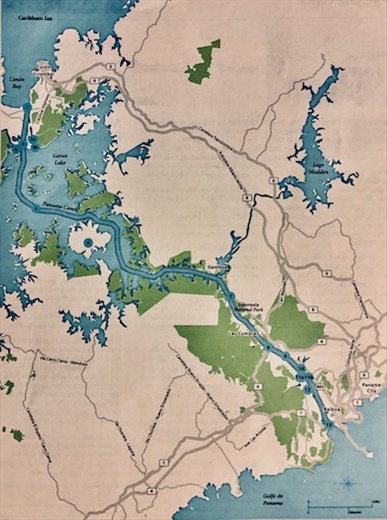
Expensive to build, expensive to use
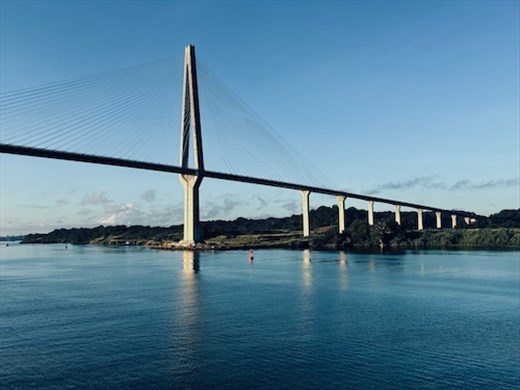
Atlantic Bridge near Colon
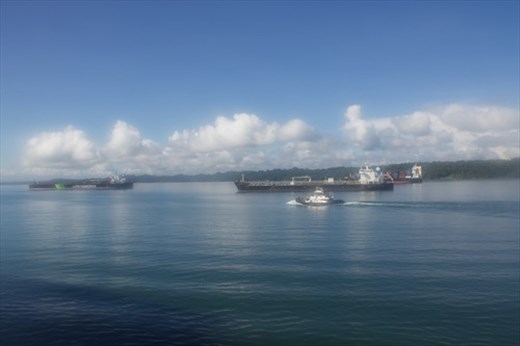
Ships at anchor on Lake Gatun
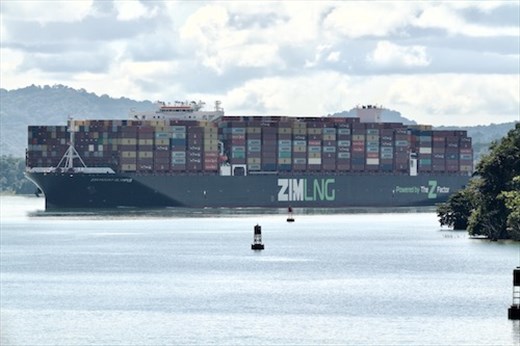
Container ships pay $1M
We first saw the Canal in 2008 when we drove from Colorado to Panama, a trip I don’t recommend. We passed under the Atlantic Bridge and through the first set of locks onto Lake Gatun during a Caribbean cruise several years ago. This time we’re transiting all the way to the Pacific— an entire day of ups and downs as locks filled and emptied, lifting Oosterdam from the Atlantic Ocean 85 feet to Lake Gatun and down 50 feet to the Pacific.
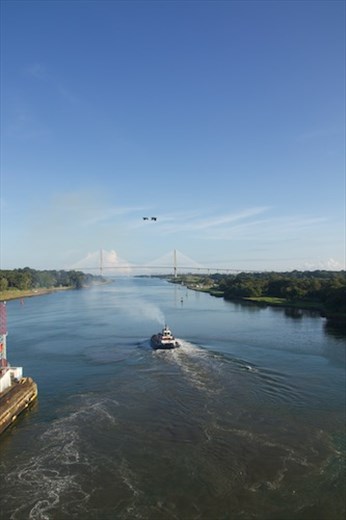
Pilot tug leads the way

Mules guide, not pull
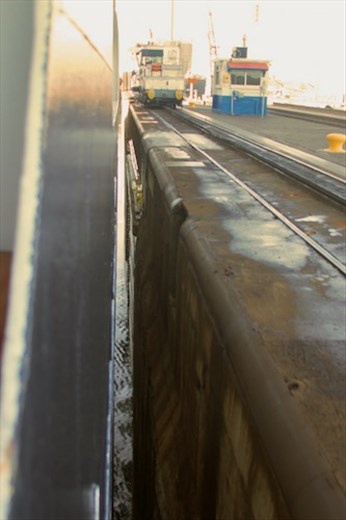
Very little room for error
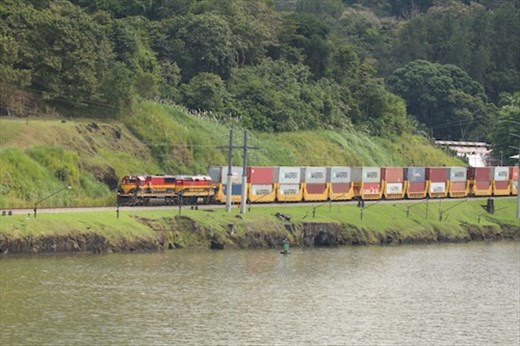
Panama Canal Railroad
Modern ships are designed to conform to the size of the locks—Oosterdam had only a foot to spare on either side. Ships control their own forward progress but are kept centered by steel cables attached to motorized “mules” that run on tracks alongside the lock. Only 30 to 40 ships transit the Canal each day, the limiting factor seems to be the amount of water in Gatun Lake. And not all cargo goes by ship—the Panama Canal Railroad also runs alongside the Canal.
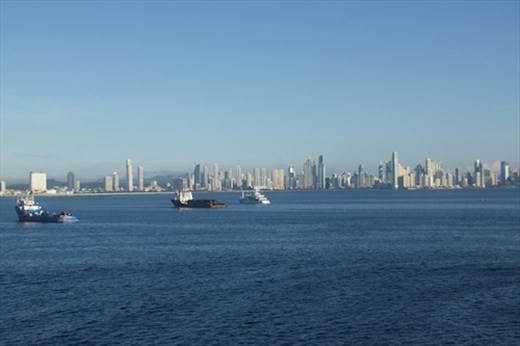
Panama City and the Pacific
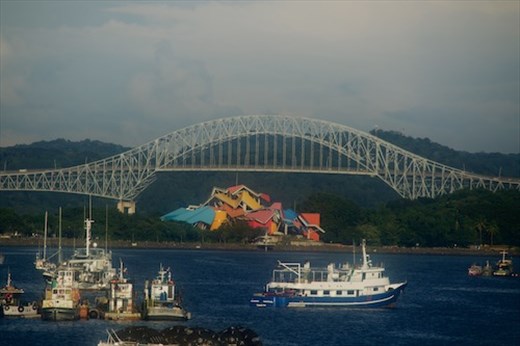
Bridge of the Americas and Frank Gehry designed BioMuseo
Once across Lake Gatun the Canal narrows and eventually becomes one-way, Pacific-bound traffic alternating every six-hours with ships going the other way. Then it’s through the three-step Miraflores Locks, under the Bridge of the Americas where the PanAmerican Highway crosses the Canal and you have arrived at at Panama City and the Pacific Ocean.
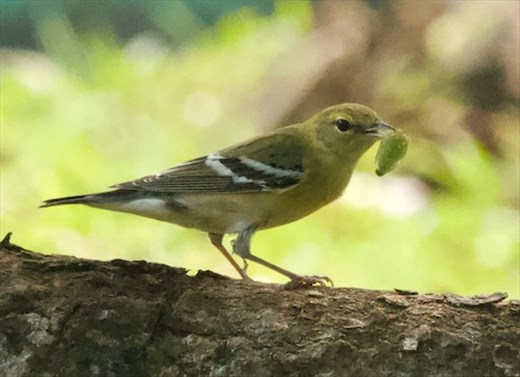
Bay-Breasted Warbler
Our plan in Panama was to visit the Nature Center, about a mile walk down the causeway from the new cruise terminal but unfortunately it was closed today. Metropolitan Park, another birding area, required a taxi. Armed with John’s Spanish and some negotiating advice, we laughed when the driver threw out a price of $200 for a 3-hour taxi hire. Ha, Ha! Thirty minutes later—haggling complete—“Freddy” dropped us at park headquarters for the agreed upon “Franklin.” Birding wasn’t great but it was nice to hike through the forest for an hour or so. We did see a couple of monkeys, some tanagers and a Bay-Breasted Warbler before heading off to the BioMuseo designed by Frank Gehry, architect of the Guggenheim in Bilbao, Spain. We didn’t bother with the museum but found a Common Tody Flycatcher and a colorful female Barred Antshrike on the grounds. We cooled off with a couple of Coke Zeros on the ride back to port—all in all, not a bad morning.
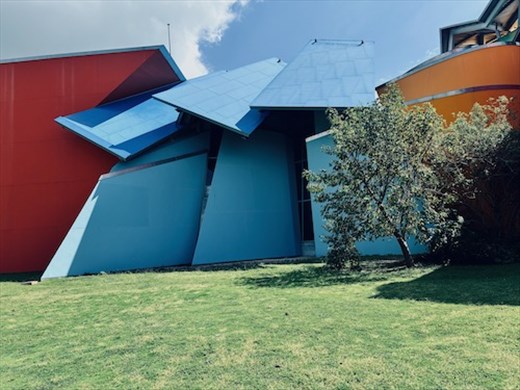
Frank Gehry-designed BioMuseo, Panama City
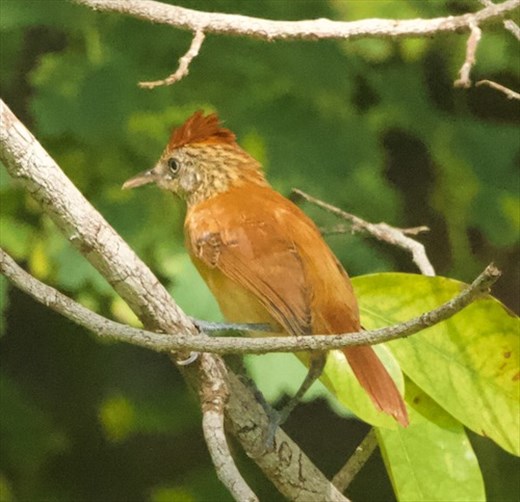
Barred-Antshrike, BioMuseo
Back the ship the maintenance crew was repainting the scrapes and scratches on Oosterdam’s hull. With such narrow clearance in the locks even the most careful Canal passage leaves nicks and gouges. The shiny black hull always looks freshly painted.
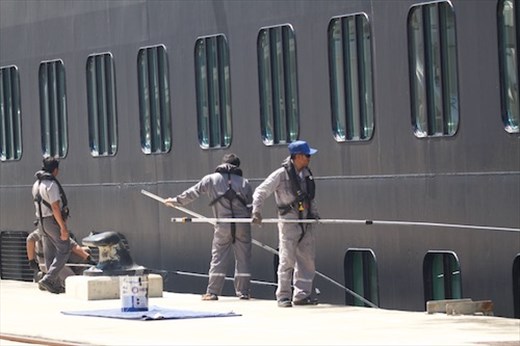
Post-Canal touchup
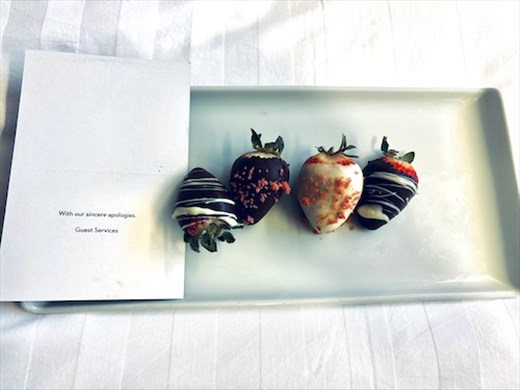
Sorry about the hot water
We can report that the rest of Oosterdam is shipshape as well. Everything except our recalcitrant shower’s lack of hot water, that is. Guest Services promises both a fix and monetary compensation. In the meantime they’re bribing us with chocolate-covered strawberries.